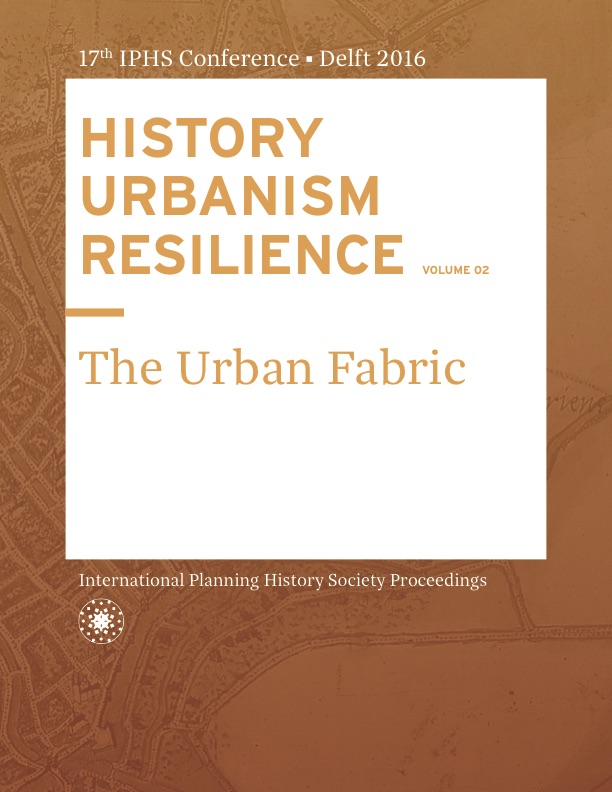Patrick Geddes as Social-ecologist: A century of mapping underused spaces in Dublin.
DOI:
https://doi.org/10.7480/iphs.2016.2.1238Abstract
The emergent discourse on urban resilience can be considered a response to the rapid pace of change and severe challenges facing urban areas. Urban resilience is understood as the application of social-ecological systems thinking to urbanised areas, and to have evolved from the study of ecological systems in the 1970s. This paper reports on research that places the discourse in a broader legacy that relates back to the emergence of the town planning movement.The research is carried out as part of the inter- and trans-disciplinary EU FP7 TURAS project (Transitioning to Urban Resilience and Sustainability) (2011-2016), which seeks new approaches to urban planning and governance that can build urban resilience. This paper identifies the mapping of underused spaces as an example, exploring the practice through re-examination of a map showing vacant sites in Dublin from 1914 influenced by Patrick Geddes (1854-1932), and review of an experimental online civic engagement platform called ‘Re-Using Dublin’ that was developed by the TURAS Project in 2015.
Patrick Geddes interpreted the world in terms of social-ecological systems and applied this intelligence to the city. Geddes was a key figure in the emergence of the town planning movement and has been a reference point for successive environmental planning discourses. This paper re-examines aspects of Geddesian theory and practice in the context of the contemporary discourse on urban resilience. Parallels are drawn between Geddesian thinking and social-ecological resilience thinking in relation to the humanity-nature relationship, city in transition, and community capital, before focusing in on Geddesian thinking in relation to the practice of surveying and vacant sites.
Geddes recognized the potential of a multi-disciplinary, inclusive and interactive process of civic survey as a means to engage citizens with local issues, and by extension with global issues. Underused spaces were considered a resource for alternative uses and the 1914 Dublin map of vacant sites provided a management tool for change in response to a severe housing crisis. A century later, Geddesian thinking can be observed in contemporary ICT applications such as ‘Reusing Dublin’, which facilitates the mapping of underused spaces in a participatory civic survey process. Underused spaces are identified through student projects and online crowd-sourcing. Users can discover and share information on any identified underused space and connect with others in relation to any particular space. The website therefore aims to empower citizens to identify opportunities and self-organise, building adaptive capacity to change in an uncertain future. A network of underused spaces is revealed, providing a landscape of opportunities within which communities, municipalities, spatial practitioners and other stakeholders can precipitate social-ecological innovation through adaptive co-management and co-design.
The paper therefore seeks to illustrate that Geddesian ideas on vacant sites and civic engagement through the practice of surveying are still very relevant and informing new experimental practices in Dublin, and that the mapping of underused spaces might be considered an example of what urban resilience means in practice.
Downloads
Published
2016-06-29
How to Cite
Crowe, P., & Foley, K. (2016). Patrick Geddes as Social-ecologist: A century of mapping underused spaces in Dublin. International Planning History Society Proceedings, 17(2). https://doi.org/10.7480/iphs.2016.2.1238
Issue
Section
Conference paper

